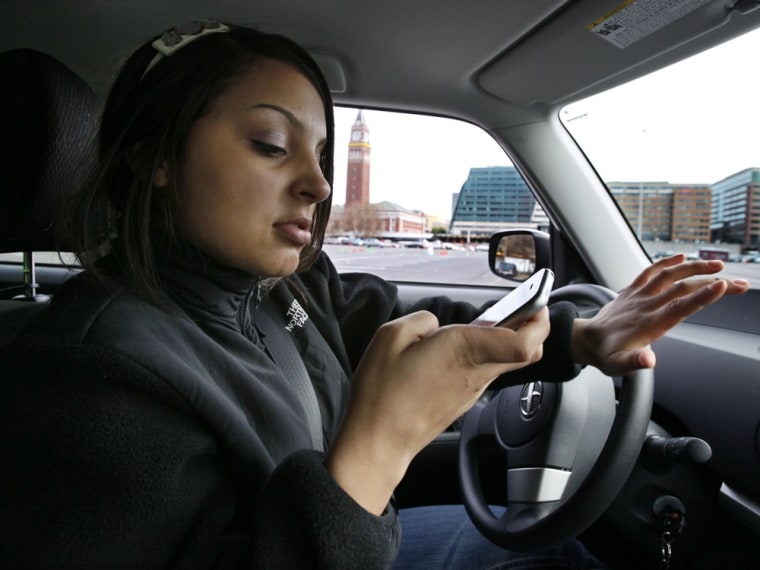My parents never had to tell me that I shouldn't drive after drinking — they know I wouldn't do that. But every now and then, they still lecture me — a young adult at this point — about my habit of peeking at my phone while at stoplights.
Texting and driving, it's called. And they're right to nag me about doing it, especially considering the data recently released by the National Highway Traffic Safety Administration (NHTSA).
The NHTSA has been studying people's driving and safety habits for some time and you can certainly rest assured that it's an authority on the subjects. So it's pretty frightening to hear that the organization's latest data shows not only an increase in texting and driving, but also a significant number of related fatalities:
[T]he percentage of drivers who text messaged or manipulated their mobile devices while driving went up significantly, from 0.6 percent in 2009 to 0.9 percent to 2010. The latest federal figures show more than 3,000 people died in car accidents in 2010 because of drivers who were texting, using a phone or were distracted by something else.

The percentage of people who were holding up cellphones to their ears while driving — instead of texting or otherwise toying with their gadgets — was at about 5 percent in 2010. According to the NHTSA, this translates into "660,000 vehicles driven by people using hand-held cellphones at a typical daylight moment in 2010." (That number jumps to about 9 percent if folks who are using a hands-free setup are included as well.)
Those are a lot of distracted drivers!
The NHTSA goes on to point out that reading or writing text messages while driving increases the risk of an accident by 2,300 percent. But it's not just texting that increases risks — other cellphone usage poses an additional danger as well:
- Drivers who use mobile devices are four times more likely to have an accident and injure themselves or others.
- Using a cell phone while driving is the equivalent of having a blood alcohol concentration level of .08 percent, the legal limit in most states.
- Using a cell phone can reduce the brain activity associated with driving by 37 percent.
The lesson? Listen to your — or my — parents, folks. Don't fiddle with your phone while driving. It might save someone's life.
Related stories:
- Survey: People like taking their phones into the bathroom
- Survey: 62% of Americans watch over 3 hours of TV daily
- Study: 99% of Android phones vulnerable to attack
Want more tech news, silly puns or amusing links? You'll get plenty of all three if you keep up with Rosa Golijan, the writer of this post, by following her on Twitter, subscribing to her Facebook posts, or circling her on Google+.
